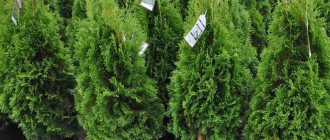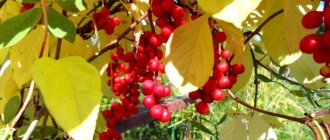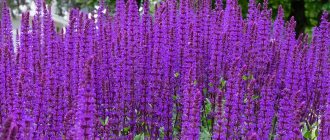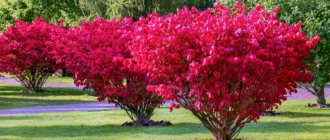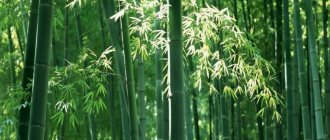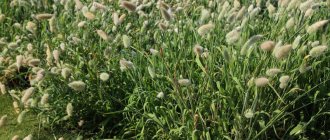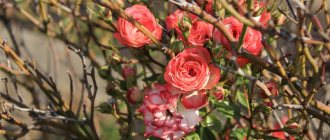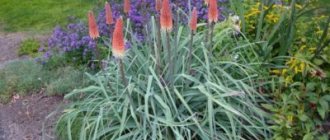Pelargonium zonalis , well known to every flower lover, is often not quite correctly called geranium. For many years, this decorative crop has occupied one of the first places in the world industrial floriculture.
Today the genus Pelargonium has about 280 species. These species are mainly found in various areas of South Africa. The most famous of them is considered to be zonal or garden pelargonium. This complex hybrid was the result of numerous crosses involving almost 200 species.
Pelargonium zonalis is a perennial crop ; in open ground in our latitudes it is used as an annual , but in rooms it can grow and develop for many years.
In the garden, pelargoniums are planted not only in flower beds, but also in hanging containers along with fuchsias, lobelias and other crops. They grow and thrive well in portable containers outdoors.
From the very beginning of its cultivation, zonal pelargonium attracted attention with its abundant and spectacular flowering. As a result of the work of breeders, a huge number of different shapes and colors were obtained (tall and dwarf species, plain and variegated, simple and double flowers).
Now this crop still retains its leading position in the world's industrial floriculture. Recently, new varieties and hybrids of pelargonium have appeared, which are particularly hardy.
Features of zonal pelargonium
The name of this type of pelargonium is associated with the color of its leaves. The slightly pubescent round leaf blades with notches are green in color and have a darker ring-shaped pattern. The above-ground part of the bush contains essential oils that give the plant a characteristic aroma.
Zonal pelargonium bushes reach 90 cm in height. In order for the flower to maintain a compact and attractive appearance, it is systematically pruned. Thanks to its high growth rate (up to 30 cm per season), pelargonium quickly recovers. Every few years the bushes are rejuvenated. They bloom in the summer season. During this period, simple or double umbrella inflorescences appear on the plants, consisting of white, pink, crimson or red flowers. There are both monochromatic varieties and inflorescences with more complex colors.
Zonal pelargonium is unpretentious and, if you follow simple care rules, will delight you with its flowers for a long time.
Pelargonium is zonal. How to achieve lush flowering.
What it is?
Zonal geranium is a very lush perennial subshrub with a straight stem, which is densely covered with green, rounded, jagged leaves; they are attached to the trunk with a long petiole. The height can reach up to a meter.
Along the edges of the sheet there are brown or dark green edgings in the form of circles, zones painted in a different color stand out, which is why the name “zonal” comes from it.
At the top of the stem, on long peduncles, there are flowers of various colors, collected in spherical inflorescences or in umbrellas. When you press the stems and leaves, a peculiar tart aroma comes out , since the plant contains healing essential oils.
Brief rules for growing zonal pelargonium
The table provides brief rules for caring for zonal pelargonium at home.
| Lighting level | Plants prefer bright but diffused light. |
| Content temperature | The most comfortable conditions for growing are considered to be 20-25 degrees in the summer. In winter, the temperature should be 13-15 degrees. |
| Watering mode | The plant requires abundant watering in summer and moderate watering in winter. |
| Air humidity | The plant needs an average level of humidity. |
| The soil | A universal substrate is suitable for growing. |
| Feeding | Feeding is carried out once every 2 weeks from mid-spring to August. |
| Transfer | If a flower becomes cramped in a pot, in the spring it is transplanted into a slightly larger one. |
| Trimming | The plant pruning procedure is carried out twice a year. |
| Bloom | The flowering period of zonal pelargonium occurs in the summer months. |
| Rest period | The dormant period usually occurs in winter. |
| Reproduction | Seeds, apical cuttings. |
| Pests | Aphids, spider mites, whiteflies, mealybugs. |
| Diseases | Rust, black leg, mold, fungal diseases. |
Diseases
| Disease | Description and treatment |
| Blackleg | From excess moisture and hypothermia, the base of the stem turns black and rots. There is no treatment. The plant is destroyed along with the soil. The pot is disinfected and reused. |
| Gray mold | If the soil is heavy, poor drainage, abundant watering, wet ground, then in such conditions gray mold begins. Symptoms: cobweb-like coating on the leaves, black spots on the stems. Treat with fungicides. |
| Leaf rust | Yellow-red spots on the leaves, leaves dry out and fall off. Leaf rust appears in a damp room, with excessive watering or from contaminated soil. Remove infected leaves and shoots. Spray with oxykh fungicides, Abiga Peak. |
| Powdery mildew | More and more powdery spots appear on the leaves and flowers. Flowers and leaves dry out and fall off. Perhaps excessive moisture and heat or large doses of nitrogen fertilizers are to blame. Spraying with topaz or oxychome will help. |
Caring for zonal pelargonium at home
Due to its unpretentiousness, zonal pelargonium rarely causes owners much trouble, but for the health of the flower its basic requirements should be observed. These include good lighting, a moderately tight container, adherence to a seasonal schedule of watering and fertilizing, coolness during the dormant period, as well as systematic pruning.
Lighting
Regardless of the variety, pelargoniums are light-loving. In a darker room, they stretch out, expose the lower part of the stems, and their foliage begins to acquire a lighter color and smaller size. Pelargonium can bloom most magnificently on the south side of the house. In this case, at midday the bushes will need to be shaded a little so that the scorching sun does not leave burns on their leaves.
For full development, bushes require about 16 hours of light per day. The eastern or western direction will not be able to provide particularly large flower caps, and flowering will end a little earlier. Additionally, in shady areas, the contrasting circular patterns on the leaves may disappear until the plant is returned to brighter light.
Temperature
Like all domestic representatives of the Geraniaceae family, zonal pelargonium prefers warmth. During the growing season, which occurs in spring and summer, the temperature in the room with it should be about 20-25 degrees. In winter, the flower is kept on a cool windowsill (about 13-15 degrees). Critical indicators for home pelargonium are considered to be 8 degrees. It is important to protect the flower from sudden changes in conditions, as well as from cold drafts. In winter, the foliage of the plant should not come into contact with the window glass.
Watering
The health of zonal pelargonium largely depends on the correct watering schedule. The soil lump in the pot should not be over-dried or over-moistened. During periods of drought, pelargonium leaves begin to turn yellow, and excess moisture can lead to rotting of the roots.
Pelargonium should be watered when the soil dries out by about 2 cm. In summer, watering is carried out about every other day, in winter - about once a week or even a decade. Excess water is drained from the pan.
Humidity level
The foliage of zonal pelargonium does not need to be sprayed constantly; this can be done only periodically, during particularly hot weather. In winter, you need to make sure that the flower is not in close proximity to the batteries and the dry air coming from them. At this time, you can place containers of water next to the pot or place it on a tray with wet pebbles.
The soil
Moderately fertile soil is suitable for growing zonal pelargonium. Excessive amounts of nutrients will lead to the growth of shoots and foliage to the detriment of flowering. You can use ready-made universal substrates or create the soil for planting yourself. To do this, mix turf with peat and humus, and then add a little coarse sand. Another additive - charcoal - will serve as protection against the development of rot. The resulting substrate must have a neutral or slightly alkaline reaction. A drainage layer must be laid at the bottom of the container.
Feeding
In order for zonal pelargonium to bloom regularly and abundantly, it needs to be fed with compounds rich in potassium and phosphorus. Nitrogen supplements will promote the development of the green part of the bush, so their volume should be minimal. You can use specialized formulations for pelargoniums or alternate mineral supplements with the addition of chicken manure infusion. Feeding is carried out approximately once every 2-3 weeks, from April until the end of summer. Starting in autumn, they stop fertilizing the bushes.
Nutrient formulations are applied both conventionally and by foliar application. After transplantation, the bushes should not be fed for about 1.5 months. During this period, they will have enough substances from fresh soil.
Transfer
Pelargonium is zonal. Transfer. How to keep pelargoniums for a long time in small pots
Zonal pelargonium can be replanted throughout the entire growth period, but it is still advisable to do this in the spring. The pot must match the size of the bush's root system. Only in a slightly cramped container will the plant be able to bloom better. Transplantation into a more spacious pot is carried out when the pelargonium roots completely fill the existing volume and begin to look through the drainage holes.
The most mature bushes do not need to be replanted, but simply replace the top part of the soil.
Trimming
In many ways, the decorativeness of zonal pelargonium depends precisely on the correct formation of its crown. This procedure is carried out twice a year. Otherwise, the plant will stretch significantly and begin to bare its branches, and its flowering will become more sparse.
The first stage of pruning is carried out in the spring. At this time, the tops of the shoots of pelargonium are cut off. The plant will begin to bush, which will contribute to the abundance of its flowering. There should be about 2-5 buds left on each branch.
Further formation is carried out in the fall. At this time, the buds on the tops of the branches should be pinched, and the weakest branches should be removed. For pruning, use only sharp and pre-sterilized tools. This will avoid infections.
Bloom
The flowering period of zonal pelargonium occurs in the summer months. Buds begin to appear at the end of spring, and the wave of flowering ends only in autumn. To make it last as long as possible, faded inflorescences should be removed.
The color palette of pelargonium flowers is very diverse. It includes various shades of white, red and pink. Often, flowers can combine several tones at once in the form of color transitions or contrasting spots on the petals. Thanks to the work of breeders who are constantly working to obtain new varieties with unusual colors or shapes of flowers, you can find pelargoniums whose appearance is very far from the usual.
Methods of propagation of zonal pelargonium
Zonal pelargonium can be propagated by cuttings and seeds. The vegetative method is considered faster and allows you to preserve all the characteristics of the variety.
Cuttings
Cuttings from pelargonium can be cut from the very beginning of the growth period of the bush until its completion in September, although the majority of flower growers try to complete all procedures before mid-summer. The size of the cuttings should be from 7 to 15 cm. The cut is made by moving down from the node by about 0.5 cm. The lowest leaf is removed. Excessively large leaf blades can be shortened to reduce the degree of moisture evaporation. Existing flower stalks must also be removed - they will take away the strength of the cutting and interfere with the formation of roots. If the piece was taken from a weakened plant, you can treat the cut with a root formation stimulator.
As a rule, pelargonium cuttings take root very well. If the room temperature is at least 20 degrees, roots will appear in about a couple of weeks. You can plant the cuttings in the ground immediately or first keep them in water. It is important to ensure that the planting material is not placed on a cold window - this can provoke the development of a “black leg”.
PELARGONIA zonal\GERANIUM Propagation by cuttings in water It couldn’t be easier
Growing from seeds
Seeds can also be used for propagation. They are purchased or collected independently by artificial pollination. Sowing is carried out in early spring. To make the seeds germinate better, the hard shell of each seed can be lightly rubbed with fine-grained sandpaper. The seed is then wrapped in a thin cloth and soaked in water for several hours.
Seeds prepared in this way are sown in a container with moist peat soil with the addition of perlite (1:10). They are distributed over the surface of the soil, and then lightly sprinkled and the container is covered with film or glass. Crops should be kept warm (at least 20 degrees), and the soil moisture level should be monitored. The germination period takes about a couple of weeks. After the emergence of seedlings, the shelter is removed and efforts are made to provide the seedlings with diffused lighting. When 2-3 true leaves are formed on them, the plants dive.
Diseases and pests
The causes of diseases of zonal pelargonium are usually the use of contaminated soil that has not been previously disinfected before planting, or non-compliance with recommended agricultural practices. Some of the most common problems include:
- Lack of flowering - excess nitrogen supplements, lack of light, lack of cool wintering.
- The foliage of the bush turns red - excessively dry or cold air in the room.
- The lower leaves turn yellow and become covered with brown spots - the soil is drying out.
- The stem at ground level begins to rot - excessive watering.
- Yellow spots on the foliage are burns from the bright sun.
- The edges of the leaf blades turn yellow - the bush was in a draft, near a radiator, or was subject to a sharp change in temperature.
- The tips of the leaves dry out - the air humidity in the room is too low.
- The falling of lower leaves is most often not a sign of a disease, but a natural process of pelargonium growth.
- Blackening of the stem is a sign of “blackleg,” a fungal disease that occurs due to untreated soil or excessive moisture.
- Light circles on the foliage are a symptom of rust. Usually the reason for the development of such a disease is excess heat and moisture.
- The stems and undersides of the foliage are covered with gray fluff - mold caused by excessive watering.
Pelargonium pests include aphids, spider mites, whiteflies and mealybugs.
Varieties of zonal pelargonium with photos and names
VARIETIES OF PELARGONIA, Review (zonal),
Pelargonium was cultivated back in the 18th century. During this impressive period, breeders were able to obtain more than one thousand spectacular varieties of this flower. The main work was aimed at reducing the size of the bush, as well as creating more unusual and lush inflorescences.
Due to the huge number of varieties, flower growers have many internal classifications. For example, among the varieties of zonal pelargonium, several groups can be conditionally distinguished according to the shape of the flowers.
- Rosaceae - double flowers of these varieties resemble miniature roses. This group of varieties is resistant to drought and, like all others, is light-loving.
- Tulip-shaped - the shape of the flowers of this group, bred in the mid-20th century, resembles mini-tulips. The flowering of such varieties is very lush.
- Carnation flowers - thanks to the cut edges of the petals, the large flowers of these pelargoniums look like carnations.
- Star-shaped - the foliage and flowers of these varieties have a more elongated shape and slight pointed edges, giving them an unusual and interesting appearance. This group of pelargoniums also appeared in the 20th century.
- Cactus-shaped - the rather long and curled petals of these flowers make them look a bit like cactus dahlias. Such original “shaggyness” gives the varieties a special charm.
- “Deacons” are hybrids obtained from zonal and ivy-leaved pelargoniums, form small bushes, but bloom very luxuriantly. The flowers can be pink, red or orange.
Among the most common varieties of zonal pelargonium:
Yu-Jiga
Highly decorative standard variety. Elegant and compact bushes have a straight stem. The inflorescences have a bright coral color and consist of flowers with many petals.
Lake
This variety is distinguished by its unpretentiousness and miniature size. The foliage of such bushes is bright green with a brown central circle. Another feature of Lake is its very lush flowering. Many flower stalks are formed on the bush, on which spherical inflorescences are located. They consist of double salmon-colored flowers.
Rafaella F1
One of the modern varieties, which is both compact and decorative. Such plants reach only 30 cm in height. During flowering, a large number of ball inflorescences are formed on the bushes. They are made up of double flowers, the petals of which fit tightly to each other. The color of pelargoniums in this series can be different: from white to peach, orange, scarlet or deep purple.
Bold Gold
This variety is suitable for both pot growing and open ground. The bushes have strong and branched shoots. The foliage is light green and complemented by a large brownish ring in the center. The spherical inflorescences consist of densely double flowers. The petals can be colored in shades of peach, orange and pink.
Minx
A variety characterized by its miniature size and particularly impressive appearance. Its beauty lies in the combination of emerald leaves with large carmine inflorescences, including double flowers. Another remarkable feature of this variety is the absence of the need to form a bush. Such plants themselves branch well and do not stretch, remaining compact.
Ainsdale Duke
This variety is one of the standard ones. Ainsdale Duke boasts particularly profuse flowering. The bushes have erect, branched shoots; periodic pinching will be sufficient to form a crown. The bright red flowers are large in size and form spherical inflorescences.
Colorama
An unpretentious plant, suitable for both home and garden. Bushes with strong branched shoots have bright green foliage with a pattern in the form of a brownish ring. The flowers have a semi-double structure and form spherical inflorescences. The colors of the densely arranged flowers include shades of white, pink, purple, red and peach.
Quantum light pink
This variety has a very original appearance. This pelargonium reaches a height of about 30 cm and has finger-shaped foliage. Its flowers are especially unusual in appearance. They resemble stars thanks to their elongated petals with a pointed tip. The color of the inflorescences is light pink, fading towards the center of the flower.
Grand Canyon
The diameter of the dense inflorescences of this variety reaches 12 cm. At the same time, the bushes themselves have a very compact size, and their height does not exceed 35 cm. The flowers are painted in a delicate pinkish-salmon shade, they have several rows of petals and look very lush and elegant on the bushes.
Mix
The leaves of this variety group have a color unusual for pelargonium. The rounded leaf blades in the center are colored chocolate; as they approach the edges, this color turns into light green. The colors of the inflorescences include light colors, so that the flowers contrast with the dark background of the foliage.
Mrs Pollock
Variegated form of pelargonium. Bushes Mrs. Pollock look incredibly impressive even after flowering has finished. The foliage has a light green center surrounded by a dark burgundy ring, and towards the edges the leaf blade becomes pale beige in color. Carmine flowers have a simple structure, but form fairly large inflorescences.
Mirka
The main difference of this variety is the large, up to 15 cm in diameter, spherical inflorescences. They consist of simple scarlet flowers and are held on fairly high peduncles. The bushes have a compact shape, their height reaches 35 cm. The foliage is colored in an emerald shade and has a brown ring pattern in the center.
Cabaret
Unpretentious plants with very large (from 12 to 15 cm) and dense inflorescences. The flowers included in them can be either simple or semi-double. Their color can be milky, coral, peach or ruby. The size of the bushes reaches 30 cm.
Quantum salmon
A profusely flowering variety with an unusual flower shape. The palmate leaf blades of this pelargonium are painted in a deep emerald color and are complemented by a brownish ring. Each inflorescence includes many star-shaped flowers. They are painted in a peachy-pink shade, lighter as they approach the edges.
History of selection
Geranium seeds were brought to Europe from southern Africa at the beginning of the 17th century. The very first varieties of geraniums appeared in the palace of the English queen with a wonderful winter garden with all kinds of strange plants. Europeans liked this beautiful plant with magnificent flowers.
At the end of the 18th century, geranium appeared in Russia.
It was found in almost every wealthy home. Subsequently, during centuries of selection, over 10,000 varieties of pelargonium of various shapes and colors were bred. Some species remained wild, were able to adapt to the cold Russian climate and grew in the open air.
Beneficial properties of zonal pelargonium
Pelargonium essential oils help in the treatment of many diseases. Inhaling the scent of the leaves of the plant will help get rid of insomnia, cure neurosis, and also cope with hypertension and heart and vascular diseases. The flower is also used industrially - its essential oil can be found in many cosmetics. The phytoncides released by pelargonium help clean the air in the room from germs and bacteria.
Indoor plants Flowering indoor plants
Angels (Angel Pelargoniums)
Originated by crossing varieties of royal pelargonium and curly pelargonium (Pelargonium сrispum), they have gained the greatest popularity in the last 30 years. Outwardly they resemble compact varieties of Royal Pelargonium with small serrated leaves and medium-sized flowers. Often the top pair of petals is a different color from the bottom three, which resembles the appearance of pansy flowers. These are often upright varieties, but there are a few cultivars that can be grown in hanging baskets. There are also varieties with variegated leaves; in some varieties the leaves have a strong citrus aroma.
|


